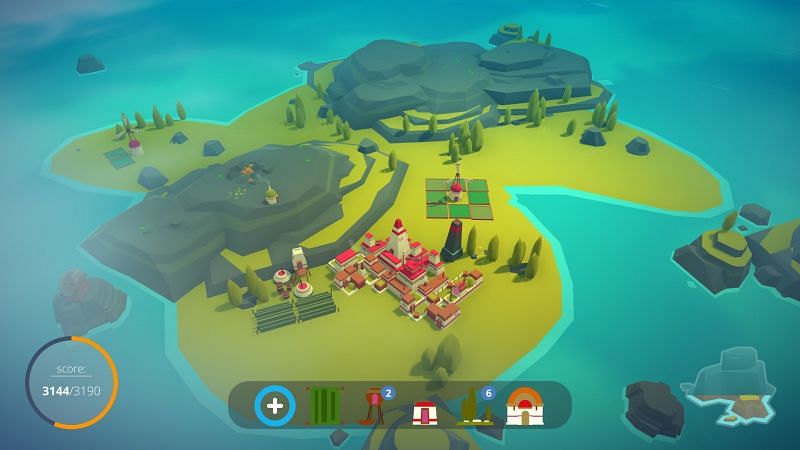Mini games: the bite-sized bursts of fun conquering our screens! From puzzle challenges to arcade thrills, these pocket-sized adventures offer instant gratification and endless replayability. But what makes them so addictive? We delve into the world of mini games, exploring their design, popularity, and the strategies behind their success.
This exploration covers everything from the core definition of a mini game, differentiating it from its full-fledged counterparts, to the various genres and platforms they inhabit. We’ll analyze trending mechanics, successful examples, and even the art of monetizing these digital delights. Get ready to unlock the secrets behind the mini game phenomenon!
Definition and Scope of Mini Games
Mini games, those bite-sized bursts of digital fun, are a ubiquitous part of the gaming landscape. Unlike their full-fledged counterparts, they are characterized by their brevity and focused gameplay, often serving as supplementary content within larger games or as standalone experiences designed for quick play sessions. Their accessibility and diverse nature contribute to their widespread popularity across various platforms.Mini games are distinct from full-fledged games primarily in their scope and complexity.
Full games typically offer extensive narratives, complex mechanics, and significant time investment. Mini games, conversely, prioritize immediate gratification and concise gameplay loops, often lasting only a few minutes or less. This difference in scale allows for a broader range of design choices and accessibility for players.
Categorization of Mini Games by Genre
Mini games span a wide variety of genres, mirroring the diversity of the broader gaming world. Their compact nature allows for creative experimentation within established genres, as well as the emergence of unique gameplay styles. Understanding these genre distinctions provides a clearer picture of the mini game landscape.
- Puzzle Games: These mini games challenge players to solve problems using logic, spatial reasoning, or pattern recognition. Examples include simple tile-matching games, sliding puzzles, or quick logic challenges. Often, these games are designed to test cognitive skills in a fun and engaging way.
- Arcade Games: Classic arcade-style mini games focus on fast-paced action and reflexes. Think simple variations of classic games like Breakout, Pong, or Space Invaders, adapted for quick bursts of play. These games often emphasize high scores and competitive elements.
- Strategy Games: Even strategy can be miniaturized. These might involve simplified resource management, quick tactical decisions, or turn-based combat condensed into a few moves. Examples could include a small-scale tower defense game or a simplified version of a board game like chess.
- Other Genres: Mini games can also be found in other genres, including racing, sports, and even role-playing games, where they might offer small side quests or skill-based challenges.
Characteristics of Mini Games: Gameplay Length and Complexity
The defining features of mini games are their concise gameplay and reduced complexity. Gameplay length is typically short, ranging from a few seconds to a few minutes, emphasizing immediate gratification. This brevity contrasts sharply with the extended playtime often required for full-fledged games. Similarly, mini game mechanics are generally straightforward and easy to learn, minimizing the learning curve and maximizing accessibility.
This ease of access allows for quick engagement, making them ideal for short breaks or casual play sessions. Complex mechanics are avoided in favor of intuitive controls and readily understandable objectives. The focus is on providing a fun and engaging experience within a limited timeframe.
Popularity and Trends in Mini Games

The meteoric rise of mini games across various platforms is undeniable. From casual mobile gaming to integrated experiences within larger applications, these bite-sized diversions have captured the attention of millions, transforming the way we interact with digital entertainment. This surge in popularity is fueled by a confluence of factors, including advancements in technology, evolving player preferences, and clever design choices.Mini games’ accessibility and brevity are key contributors to their widespread appeal.
Unlike full-fledged games requiring significant time commitments, mini games offer instant gratification, fitting seamlessly into busy lifestyles. Their ease of access, often requiring minimal download or setup, further enhances their appeal, making them readily available on smartphones, tablets, and even within web browsers.
Successful Mini Games and Their Design Elements
Several mini games have achieved phenomenal success, demonstrating the effectiveness of specific design principles. Candy Crush Saga, for instance, masterfully employs a simple yet addictive match-three mechanic, coupled with visually appealing graphics and a compelling progression system. Its strategic use of in-app purchases, without being overtly intrusive, also contributes to its longevity and profitability. Similarly, the success of Flappy Bird, despite its seemingly simplistic gameplay, highlights the power of deceptively challenging mechanics and the viral nature of easily shareable gameplay experiences.
The game’s minimalist design, while seemingly simple, proved incredibly effective in creating a high level of engagement. These examples showcase the importance of balancing simplicity with strategic depth, visual appeal, and social sharing opportunities.
Current Trends in Mini Game Development
The mini game landscape is constantly evolving, with emerging technologies and gameplay mechanics shaping the future of this dynamic genre. The increasing integration of augmented reality (AR) technologies is transforming mini games, blurring the lines between the digital and physical worlds. Imagine a mini game overlaid on your living room, turning your furniture into interactive game elements. This type of immersive experience is becoming increasingly feasible and attractive to developers and players alike.
Furthermore, the rise of hyper-casual games, characterized by extremely simple controls and immediate gameplay, demonstrates a continuing trend towards accessible and instantly satisfying experiences. The use of procedural generation, which allows for near-infinite replayability by creating unique levels or challenges each time, is also gaining traction. This ensures that players don’t quickly become bored, increasing the overall longevity of the game.
Design and Development Aspects of Mini Games

Mini games, despite their seemingly simple nature, require careful planning and execution to achieve engaging and successful results. The design and development process encompasses a multifaceted approach, balancing creative vision with technical feasibility to create a compelling player experience. From conceptualization to final release, each stage plays a crucial role in determining the mini game’s overall success.
This section delves into the key aspects of mini game design and development, exploring the creation of a sample concept, crucial design considerations, and a structured development process.
A Simple Mini Game Concept: “Stack ‘Em High”
This mini game centers around stacking colorful blocks. The player controls a falling block, attempting to place it precisely atop the existing stack. The stack grows taller with each successful placement. Failure to accurately position the block results in the stack collapsing, ending the game. The objective is to achieve the highest possible stack height within a time limit.
The target audience is casual gamers of all ages, particularly those seeking short, easily digestible bursts of gameplay. The game’s visual style would be bright and cheerful, using simple, appealing graphics.
Essential Design Considerations for Mini Games
Creating a successful mini game hinges on prioritizing user experience and engagement. Several key design elements significantly impact the player’s enjoyment and overall experience.
The following considerations are paramount for a positive player experience:
- Intuitive Controls: Simple, easy-to-understand controls are crucial for broad appeal. Complex controls can quickly frustrate players and detract from the fun.
- Clear Objectives: Players need to instantly grasp the game’s goal. Ambiguous objectives lead to confusion and disengagement.
- Visually Appealing Design: Attractive graphics and animations enhance the overall experience and draw players in. The visual style should align with the game’s theme and target audience.
- Rewarding Gameplay: Regular rewards and a sense of progression keep players motivated. This could include points, achievements, or unlocking new content.
- Short Play Sessions: Mini games excel at providing brief, satisfying gameplay experiences. Keeping sessions concise ensures accessibility and prevents player fatigue.
- Accessibility: Consider players with disabilities. Implement features to ensure inclusivity, such as customizable controls and visual cues.
Mini Game Development Process
Developing a mini game involves a structured approach, dividing the process into distinct stages to ensure efficiency and quality.
The typical development phases are Artikeld below:
- Concept & Design: This stage involves brainstorming ideas, defining core mechanics, target audience, and creating initial designs (including art style, user interface, and gameplay flow).
- Prototyping: A basic playable version of the game is created to test core mechanics and gather feedback. This allows for early adjustments before significant development effort is invested.
- Development: The full game is built based on the prototype, incorporating all features, assets, and programming logic. This stage may involve iterative development, incorporating feedback from testing.
- Testing & Refinement: Thorough testing is crucial to identify and fix bugs, balance gameplay, and ensure a polished final product. This phase often involves playtesting with a target audience.
- Deployment & Marketing: Once the game is finalized, it’s deployed to the chosen platform (e.g., app stores, websites). Marketing efforts are undertaken to reach the target audience.
Mini Games Across Different Platforms
The ubiquitous nature of mini games means they’ve conquered a variety of platforms, each presenting unique design challenges and opportunities. From the casual swipe of a mobile phone to the immersive experience of a console, the implementation and overall player experience vary significantly. Understanding these platform-specific nuances is crucial for developers aiming to maximize their mini game’s reach and impact.Mini games adapt to the constraints and capabilities of each platform, resulting in diverse gameplay experiences.
Mobile devices prioritize touch controls and short, easily digestible gameplay loops, while web browsers often favor simplicity and immediate accessibility. Consoles, on the other hand, can leverage more advanced graphics and sophisticated control schemes. This inherent difference shapes the design philosophy and technical implementation across these platforms.
Mobile Mini Games
Mobile platforms, dominated by iOS and Android, present a massive market for mini games. Their portability and accessibility make them ideal for quick bursts of gameplay. Design considerations often revolve around intuitive touch controls, short play sessions, and monetization strategies like in-app purchases. Successful mobile mini games usually feature simple mechanics, easily understood objectives, and visually appealing graphics optimized for various screen sizes and processing powers.
Examples include popular titles like “Candy Crush Saga” and “Angry Birds,” which epitomize the core principles of successful mobile mini game design: simplicity, addictive gameplay loops, and effective monetization.
Web Browser Mini Games
Web browser mini games boast unparalleled accessibility. Requiring only a web browser, they can reach a vast audience without the need for downloads or installations. This accessibility, however, comes with limitations. Browser-based games are typically constrained by browser capabilities, demanding careful consideration of cross-browser compatibility and performance optimization. The design usually focuses on simplicity, ensuring the game runs smoothly on a wide range of devices and internet connections.
Games built using HTML5 and JavaScript are prevalent, allowing for broad compatibility and relatively easy deployment. Many casual games found on websites like Kongregate or Miniclip showcase the effectiveness of this approach.
Console Mini Games
Console mini games, while less common than mobile or web browser counterparts, can leverage the superior processing power and advanced input methods of dedicated gaming hardware. This allows for richer graphics, more complex mechanics, and potentially more immersive experiences. However, the development process is often more complex and resource-intensive, requiring specialized skills and potentially larger development teams. Mini games on consoles often integrate with existing gaming ecosystems, utilizing features like online leaderboards and achievements to enhance player engagement.
Examples could include small, self-contained games bundled with larger titles or those specifically designed as quick diversions within a larger console game ecosystem.
Monetization Strategies for Mini Games

Mini games, despite their often short playtime, represent a lucrative market for developers. Successful monetization hinges on finding a balance between generating revenue and maintaining a positive player experience. Overly aggressive monetization can quickly alienate players, while a lack of monetization leaves developers without the resources to continue development and improvement. Therefore, choosing the right strategy is crucial for long-term success.The most common monetization strategies for mini games involve a combination of in-app purchases and advertising.
However, the optimal mix depends on the game’s genre, target audience, and overall design. Some games rely heavily on one method, while others successfully integrate both. Careful consideration of player psychology and market trends is key to maximizing revenue while minimizing player frustration.
In-App Purchases
In-app purchases (IAPs) offer players the opportunity to buy virtual goods, premium features, or advantages within the game. This can range from cosmetic items like character skins or power-ups that enhance gameplay to removing ads or unlocking new levels. The effectiveness of IAPs depends heavily on their perceived value to the player. Well-designed IAPs should feel rewarding and enhance the experience without creating a pay-to-win scenario.
For example, a puzzle game might offer IAPs for hint packs or extra lives, while a racing game could sell cosmetic upgrades for vehicles. The key is to offer choices that feel optional but appealing to players who want to enhance their enjoyment.
Advertising
Advertising is another prevalent monetization method in mini games. This can take the form of rewarded video ads, banner ads, or interstitial ads. Rewarded video ads, which offer players in-game rewards for watching an advertisement, generally provide a better user experience than intrusive banner or interstitial ads. However, oversaturation of ads can lead to player churn. Finding the right balance between ad frequency and reward value is crucial.
A successful strategy might involve offering a variety of reward options for watching ads, allowing players to choose the type and frequency of ads they’re willing to view. For instance, a casual game might offer bonus coins for watching a 30-second video ad, providing a tangible benefit for the player’s time.
Comparison of Monetization Models
While both IAPs and advertising can generate significant revenue, their effectiveness differs based on player behavior and game design. IAPs generally provide higher average revenue per user (ARPU) but may alienate players if not implemented carefully. Advertising, on the other hand, has a lower ARPU but can reach a broader audience and generate consistent revenue streams. Many successful mini games employ a hybrid model, combining both IAPs and advertising to maximize revenue and cater to different player preferences.
Games with strong core gameplay tend to succeed more with IAPs, while games with simpler mechanics may rely more on advertising. The Candy Crush Saga franchise, for example, is a prime example of a successful IAP model, while many free-to-play mobile games utilize a combination of both methods.
Monetization Plan for a Hypothetical Mini Game
Consider a hypothetical mini game, “Stack ’em High,” a casual stacking game where players stack blocks to build a tower. The monetization plan would integrate both IAPs and rewarded video ads. IAPs would offer cosmetic items like different block skins and themes, adding visual variety and personalization without impacting gameplay balance. Rewarded video ads would offer players extra lives or the opportunity to undo mistakes, providing a clear benefit for watching the advertisement.
This approach ensures that players can progress through the game without paying, but also offers options for those who want to enhance their visual experience or avoid frustrating setbacks. This hybrid approach aims to strike a balance between player enjoyment and revenue generation, creating a sustainable monetization strategy for the game.



